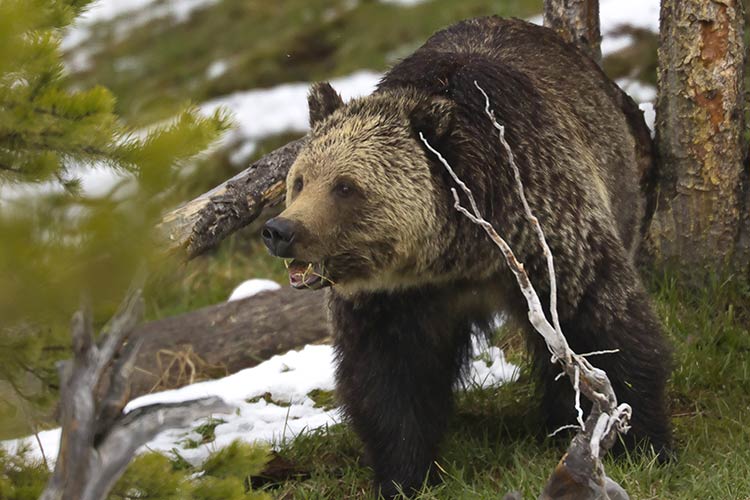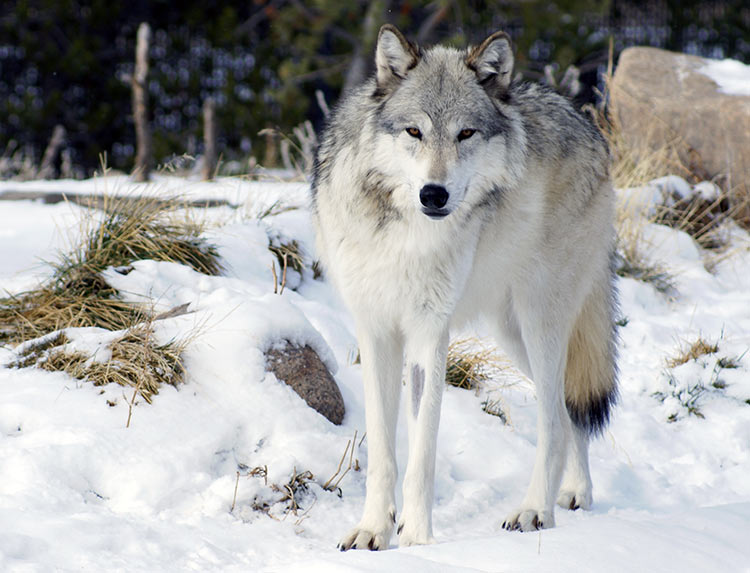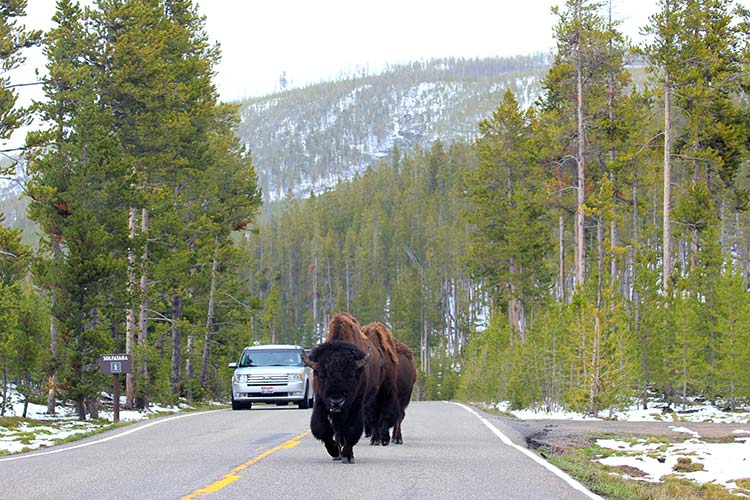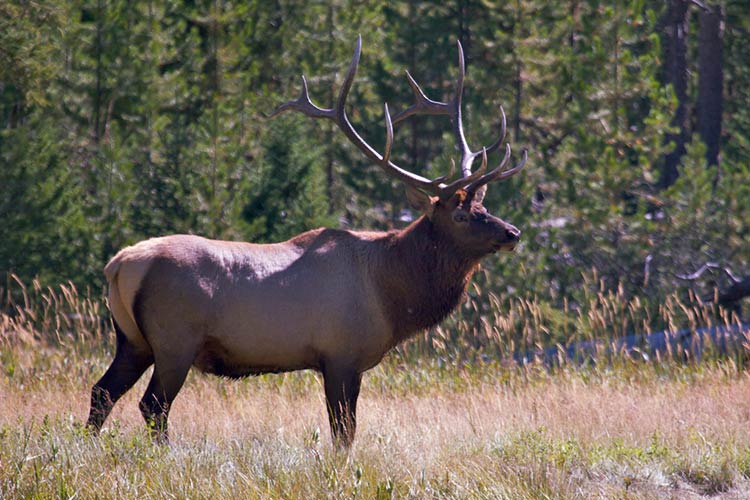All this is very good news for the over 400 species that call Yellowstone home, including North America's largest (bison), fastest (pronghorn antelope) and most fearsome (grizzly bears) animals. And for the humans who travel here to spot them, it's even better.
If you're skeptical about finding wildlife in a park that has Yogi Bear as its unofficial mascot, and that gets mobbed by three million visitors a year, consider this: walk two miles from a road and you'll leave 95% of the park's tourists in your dust. Go even further by camping in the backcountry and you'll be bedding down beside wolves and grizzlies. It's wild. Welcome to the food chain.

Grizzly bear in Yellowstone National Park. Image by Rob Daugherty – RobsWildlife.com / Getty Images.
The first time you hear a wolf howl in the Yellowstone backcountry the hairs will literally stand up on the back of your neck. The adrenalin-inducing moment packs such a primeval punch that it will remain lodged in your memory for years. The National Park Service reintroduced gray wolves (not to be confused with the similar looking but smaller coyote) to Yellowstone in 1995 and now around 100 wolves roam the park in half a dozen packs. You stand a good chance of spotting them if you dedicate a day or two, but if you really want to appreciate how the reintroduction of wolves has impacted the Yellowstone ecosystem take a course with the Yellowstone Association (www.yellowstoneassociation.org) or go spotting with a professional guide.
Grizzly bears are the true kings of Yellowstone, sitting pretty as the ecosystem's dominant predator, and around 400 to 600 bruins patrol the region. (Certain grizzly-dense corners of the park are off-limits to visitors or have seasonal restrictions.) Black bears are smaller, more common and generally less aggressive; you can distinguish a grizzly by its dish-shaped face, humped back and the fact that it's chewing on your leg.
You are almost guaranteed to see at least a handful of the park's 4600 bison or 30,000 elk (in fact you probably won't even have to take off your seatbelt!). You also have a fair chance of spotting moose in riverside willow groves or bighorn sheep on high, inaccessible crags. Graceful trumpeter swans, pelicans and sandhill cranes are all fairly common, as are foxes, otters, coyotes and marmots. But you’ll have to be truly blessed to spot the park's ghost-like lynx, wolverines or mountain lions.

Gray wolf at the Grizzly & Wolf Discovery Center in West Yellowstone, by Ellie Attebery. CC BY 2.0.
The rolling and open Lamar Valley in the park's northwest corner is justly known as 'America's Serengeti' for its large herds of grazing bison and elk and the occasional wolf pack or grizzly on the hunt. The nearby Hayden Valley is home to more bison and is another good place to spot grizzlies at dawn and dusk, especially in spring. Elk (or wapiti) often delight tourists by grazing the manicured lawns of the Mammoth visitor center, while bighorn sheep scale the cliffs of Mt Everts near the park's north entrance. The shores of Yellowstone Lake are the place for spotting wildfowl and springtime grizzlies.

Face to face encounter with bison in Yellowstone. Image by Ajar. CC BY-SA 2.0.
Summer (June to August) is easily the most popular time to visit Yellowstone but peak-season crowds and midday heat push many animals up to higher, remote parts of the plateau, so you'll have to get up earlier and hike further to find them at this time.
From April to May spring brings adorable gift shop-sized baby bison and gangly new-born elk, as well as hungry grizzlies prowling for frozen carcasses after their long winter sleep.
Our favorite time to visit is on crisp autumn days (September and October) when the valleys echo with the metallic sounding bugling of bull elks as they jostle for supremacy.
Winter (January, February) is a particularly magical time, if you come equipped for temperatures that drop down to a brutal -13°F (-25°C). Animals migrate to the lower regions of the park, especially the geyser basins with their steaming hot springs, and they are relatively easy to spot and track against the snowy monochrome background.

One of Yellowstone's 30,000 elk, by Schmeeve. CC BY-SA 2.0.